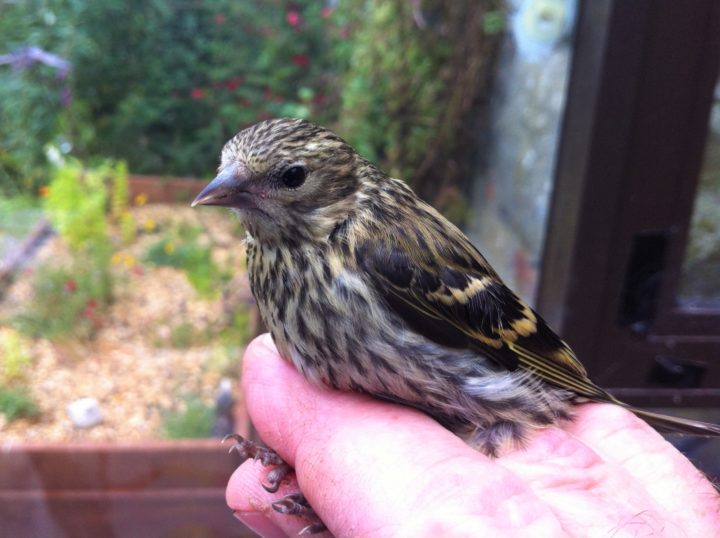June saw the last ringing of a brood of young tawny owls on the 11th. This year I had around 50% occupancy (breeding attempts) that’s at 10 sites. However, two failed so we have to downgrade to 40% successful. The failures were of a bird that is relatively old (over 10 yrs.) and another who we only glimpsed in a new box and so we can only guess might be a youngster who might do better next year. The others had broods of 1, 1, 2, 1, 3, 1, 3 and 2; not large numbers but quite normal in this area. Tawnys are too aggressively territorial to nest close to other tawny owls but several nested very close to our rare goldeneye ducks who they clearly have no problems with as neighbours. We had had to move one long-established box in a coastal wood early in March because the uphill path to it was becoming a hazard to all concerned but the clever pair of owls quickly found the new box, moved in in April and raised young in May. Another very new owl moved into a box that was only put up in March and also raised young in May in the middle of a busy caravan site. A barrel box only a couple of meters off the ground near Longhorsley saw a brood of 3 in June and another barrel (actually intended for Barn Owls) rather higher up a tree (in quite an unusually open position to attract tawny’s) produced another 2. We had suspected these owls had taken-over the barrel last year because the youngest’s were seen ‘branching and skipping’ their way along the local hedgerows
The bird that straddles the tawny and barn owl nesting season is the Kestrel; although they don’t seem to have late summer broods. Some years I have several in purpose-built boxes and/or barn owl boxes. Like Barn Owls they like to see their way clearly ‘in and out’ so they don’t use tawny boxes hidden in trees. This year only one used a rather large owl box (not my design) looking out over a field of crops. We were able to catch and ring the female back on the 11th May when she had 5 eggs; returning on the 17th June she flew overhead while we ringed her 4 successfully hatched pulli. It has to be said that young kestrels can be very feisty not to say barmy – lying on their backs trying to strike you with their sharp talons but this brood was actually quite laid-back and calm (see pict.). I am generally concerned about the Kestrel population in Northumberland which does seem to be in decline.
At this point can I just take the opportunity to remind folks that not everything you can see and buy on the internet is a good thing! If you would like a design for an owl or kestrel box (that works in this area) or to have one made for a donation please get in touch.
We started ringing this year Barn Owls on the 17th June when two pulli were found in a box near Fallodon. The female here was particularly interesting as she was herself ringed near Rochester, far to the west; on the 6/8/13. I controlled her near her present location in March 2013 but no one had seen her since until this year; when she had 5 eggs in May. A second call that day near the coast found a large brood of 5 which we were able to ring (see pict.). There was a very large ‘larder’ of 12 dead voles/mice in this box! We checked on another box which generally produces very early young and found only two small young so I noted that down for another visit. An interesting feature of this years checking has been the number of pairs of owls (not just the female bird) being present in boxes with eggs; this enables interesting comparisons of the plumage with the female birds usually showing their conspicuous brown spots (see pict.)
Finally, have you noticed young juvenile birds in your gardens recently? Often quite confusing with their different shades of colouration – very green looking juvenile Great Tits; very yellowish Blue Tits. I recently caught and ringed a juvenile Siskin coming to Niger seed at home that is a soft beige colour (see pict.) I particularly like to ring these young small finches because they have the potential to travel hundreds of miles away – and then return to their natal area.

This leads me onto the Howick Ringing Station which I will start using on most Friday and Saturday mornings from around the 19th July into the Autumn. Bad weather will stop (or curtail) proceedings but otherwise we should be on site at the edge of the Howick Arboretum/Gardens from about 7:00 until lunchtime. If interested in ringing please get in touch or just turn-up. Photographers are allowed but please don’t impede the science!
Anyone interesting in ringing is invited to get in touch.
Phil Hanmer ‘A’ Ringer/Trainer; Natural History Society of Northumbria Ringing Group (Hancock Museum).
E-mail: tytoalbas@btinternet.com